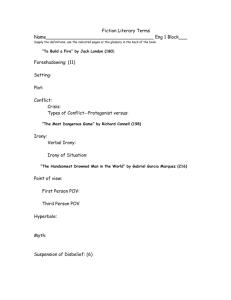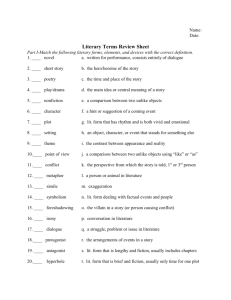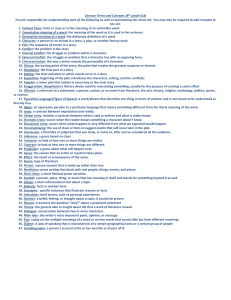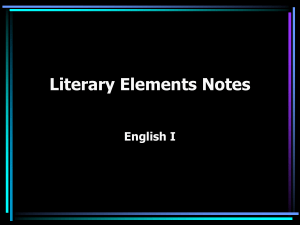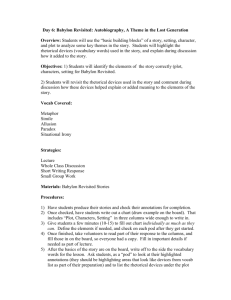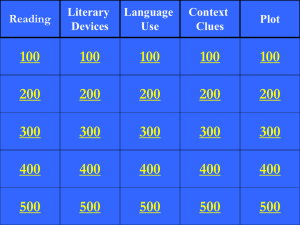Drama post assessment3rd-1
advertisement
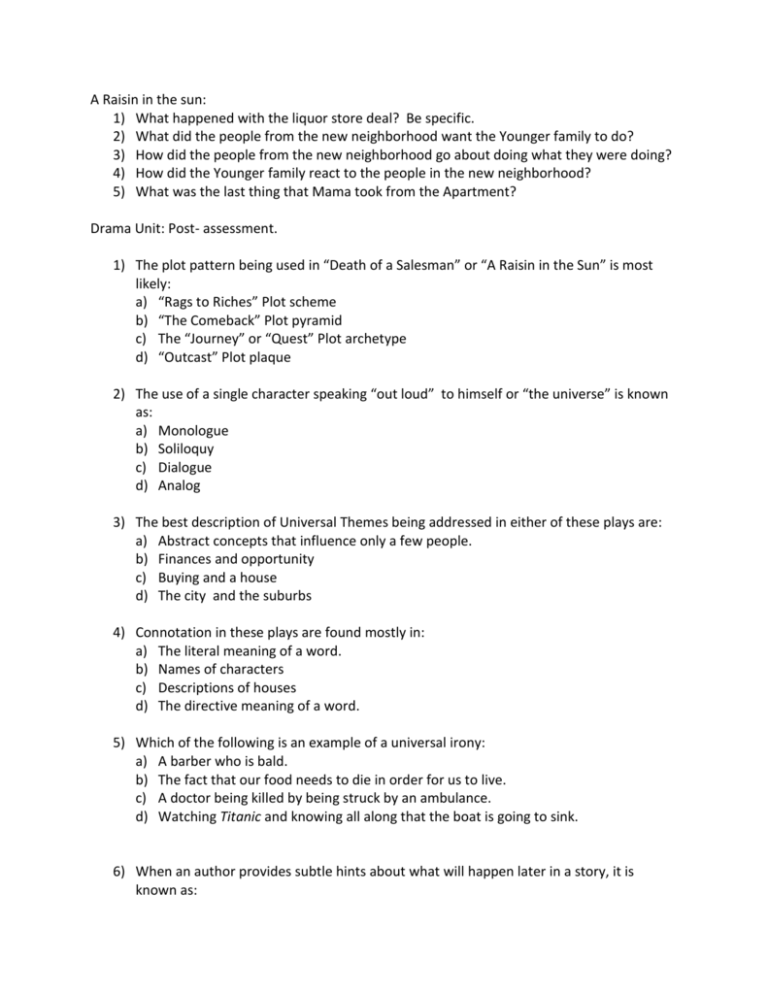
A Raisin in the sun: 1) What happened with the liquor store deal? Be specific. 2) What did the people from the new neighborhood want the Younger family to do? 3) How did the people from the new neighborhood go about doing what they were doing? 4) How did the Younger family react to the people in the new neighborhood? 5) What was the last thing that Mama took from the Apartment? Drama Unit: Post- assessment. 1) The plot pattern being used in “Death of a Salesman” or “A Raisin in the Sun” is most likely: a) “Rags to Riches” Plot scheme b) “The Comeback” Plot pyramid c) The “Journey” or “Quest” Plot archetype d) “Outcast” Plot plaque 2) The use of a single character speaking “out loud” to himself or “the universe” is known as: a) Monologue b) Soliloquy c) Dialogue d) Analog 3) The best description of Universal Themes being addressed in either of these plays are: a) Abstract concepts that influence only a few people. b) Finances and opportunity c) Buying and a house d) The city and the suburbs 4) Connotation in these plays are found mostly in: a) The literal meaning of a word. b) Names of characters c) Descriptions of houses d) The directive meaning of a word. 5) Which of the following is an example of a universal irony: a) A barber who is bald. b) The fact that our food needs to die in order for us to live. c) A doctor being killed by being struck by an ambulance. d) Watching Titanic and knowing all along that the boat is going to sink. 6) When an author provides subtle hints about what will happen later in a story, it is known as: a) b) c) d) Verbal irony Denouement Foreshadowing Dramatic Irony 7) First person, third person, limited and omniscient are different types of: a) Persons b) Points of view c) Point of contact d) Foreshadowing. 8) Using objects to represent abstract concepts is known as: a) Syllogism b) Symbolism c) Soliloquy d) Synapses 9) The manner in which an author expresses his or her attitude; intonation of the voice that expresses meaning -- This could move several times throughout the passage from quiet to apprehensive, to confident to exuberant to terrified: a) Attitude b) Style c) Tone d) Disposition 10) Writing that uses figures of speech such as metaphor, simile, and allusion is known as: a) Figurative Language. b) Denotative Language c) Connotative Language d) Expressive Language

